Exhibition: Harold Ancart — Bird Time
October 29 – November 11, 2023
Ryosokuin Temple. Kyoto, Japan
Bird Time was an exhibition by Harold Ancart at Ryosokuin Temple, a Zen temple established in 1358, in Kyoto, Japan. Ancart’s first solo exhibition in Japan, it presented a series of paintings specifically designed to complement the temple’s architecture. Each painting featured a circular window that opens onto an alternate reality.
The exhibition was organized by the Contemporary Art Foundation. It’s founder and chairman, Yusaku Maezawa of ZOZO Inc. and one of ARTnews’ Top 200 Collectors, has been a collector of Ancart’s work since 2017.

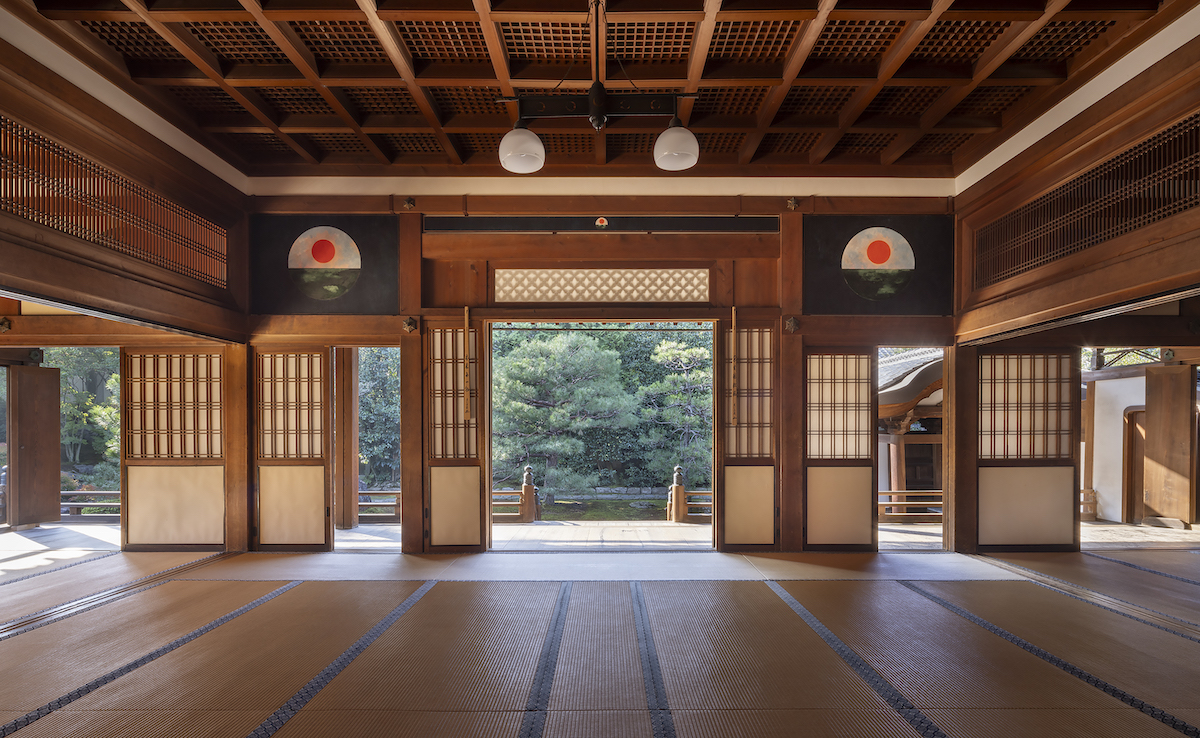
Special Interview——————
Harmony in Art and Nature: “Bird Time” at Ryosokuin Temple
In the heart of Kyoto, nestled within the ancient embrace of Ryosokuin Temple, a transformative art exhibition has unfolded, breaking the conventional boundaries of contemporary art. “Bird Time,” a captivating collection by the acclaimed artist Harold Ancart, has graced the serene halls of this Zen temple, creating a harmonious dialogue between art and the temple’s sacred surroundings.
Harold Ancart’s Vision Unveiled
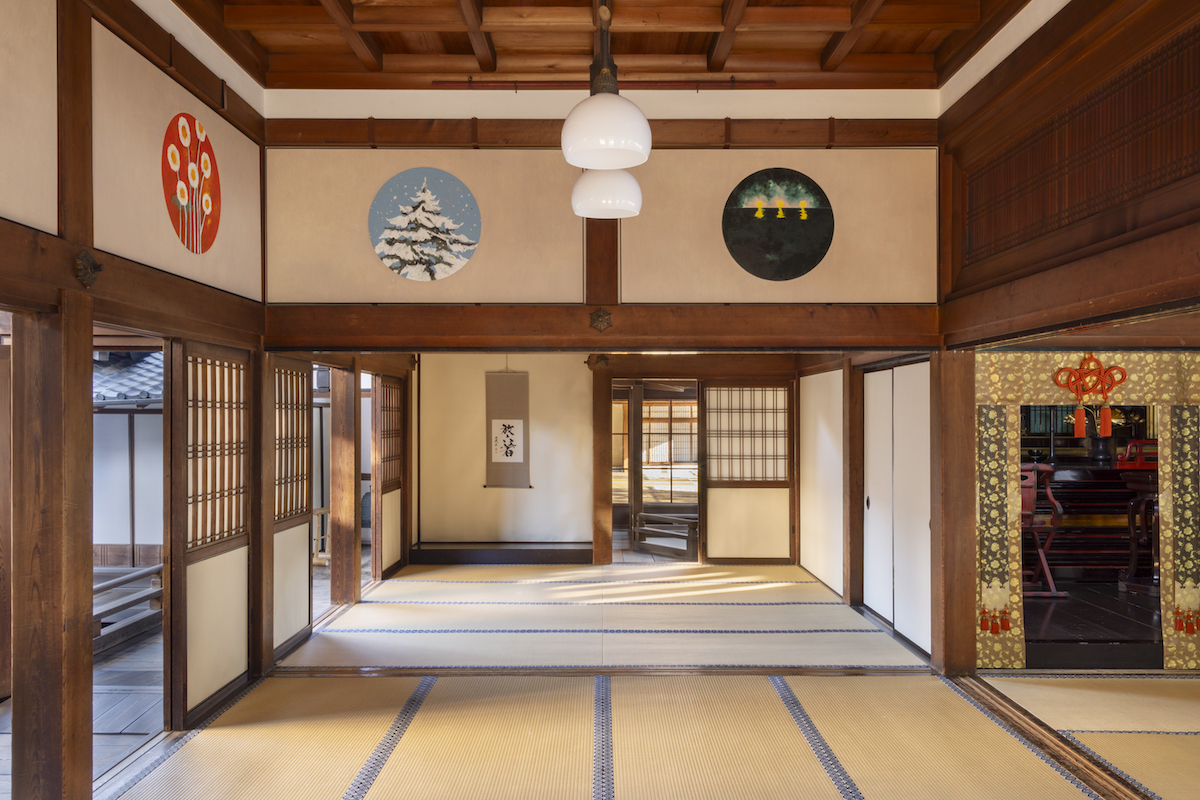
Ancart, a Belgian-born artist currently based in New York, embarked on a unique journey that led him to the tranquil spaces of Ryosokuin. He shared the genesis of this extraordinary collaboration:
The Contemporary Art Foundation offered me to do an exhibition in Japan. For many years, we had the conversation, but then, as you know, at some point, nobody was traveling anymore. I always said yes; it’s interesting to make an exhibition in Japan, but perhaps instead of having just a white wall gallery, it would be interesting to do it in a more traditional Japanese architecture (setting) – to do something more challenging or different.”
Framing Nature
The result was “Bird Time,” a series of paintings meticulously crafted to fit seamlessly into the temple’s ancient architecture. Ancart’s artistic journey took a profound turn as he delved into the essence of the temple, particularly captivated by the round windows that framed the picturesque landscapes.
These windows into other realms invite viewers to explore the physical landscape and the inner landscape of their thoughts, seamlessly blending with the temple’s emphasis on meditation and self-discovery. The circular motifs in his paintings transformed the windows into symbolic telescopes, inviting viewers to embark on a visual journey, much like the pirates of old searching for treasures.
As Ancart further explained, “When you look at the painting, you’re looking for maybe a treasure. You’re trying to find something rewarding, you’re trying to find the magic moment, and maybe there are many magic moments, but you’re looking for something, so you’re actively looking.” He likened this search for valuable riches within art to a pirate on the quest for lost treasure. “The pirates, with the flag, they also look for the treasure with the telescope. So, it was almost like a joke on the act of looking or seeing because it’s not the same thing.”

The Harmony of Art and Space
The collaboration between Ancart and Ryosokuin was no coincidence but a carefully orchestrated union guided by Shihiro Watanabe, who recognized the resonance between Ancart’s work and traditional Japanese architecture. With its circular windows, the temple became a natural canvas for Ancart’s creations. The connection was immediate as Ancart expressed, “When I arrived, we came into the entrance where you have the round window. And the round window gives the view onto the garden. And for me, it was exactly the same thing, of framing what’s going on. So that was the first thing that when I came here, I thought, okay, obviously it’s a sign.”
The careful consideration of the temple’s purpose and the practices of those who visit for meditation influenced Ancart’s approach. He described it this way: “The architecture is made so that I think the light can travel or the energy can travel through the house. So, my first thought was ‘we cannot put anything that is going to block or obstruct something that is already there.””
This thoughtful integration of art into the spiritual environment reflects Ancart’s belief that an exhibition should not impose but coexist with the space. He emphasized, “I wanted to do something that looked like it belonged to the place, that it was not forced into the place. Because I know that people come here and meditate… So, they can use the temple as they always use the temple because they can choose to pay attention or not. And it’s good to leave people the choice.”
Inviting the Unplanned: A Glimpse into Ancart’s Artistic Philosophy
Ancart challenges the notion of planned beauty, emphasizing the spontaneous and the unplanned. “When you suddenly look out the window, you may notice the beauty in the relationship between two clouds. But as soon as I try to make something beautiful, it stops being beautiful,” he confesses. This philosophy unveils the artist’s commitment to authenticity, allowing beauty to emerge organically, much like the quiet elegance of Ryosokuin itself.
As we explore Ancart’s artistic palette, a rich tapestry of colors emerges. His paintings, adorned with circular motifs, draw inspiration from traditional Japanese architecture. The colors, carefully chosen, mimic the hues of Ryosokuin’s serene walls, creating a seamless integration between the artwork and the sacred space.
Ancart, when discussing his artistic process, reveals the intricate dance between color and space. “The environment completes the work. The context is like a shell, a shell that echoes the very essence of the temple. The chosen beige and pale blue, mirroring the temple’s walls, ensure that the paintings not only exist within the space but become an integral part of its spiritual aura.”
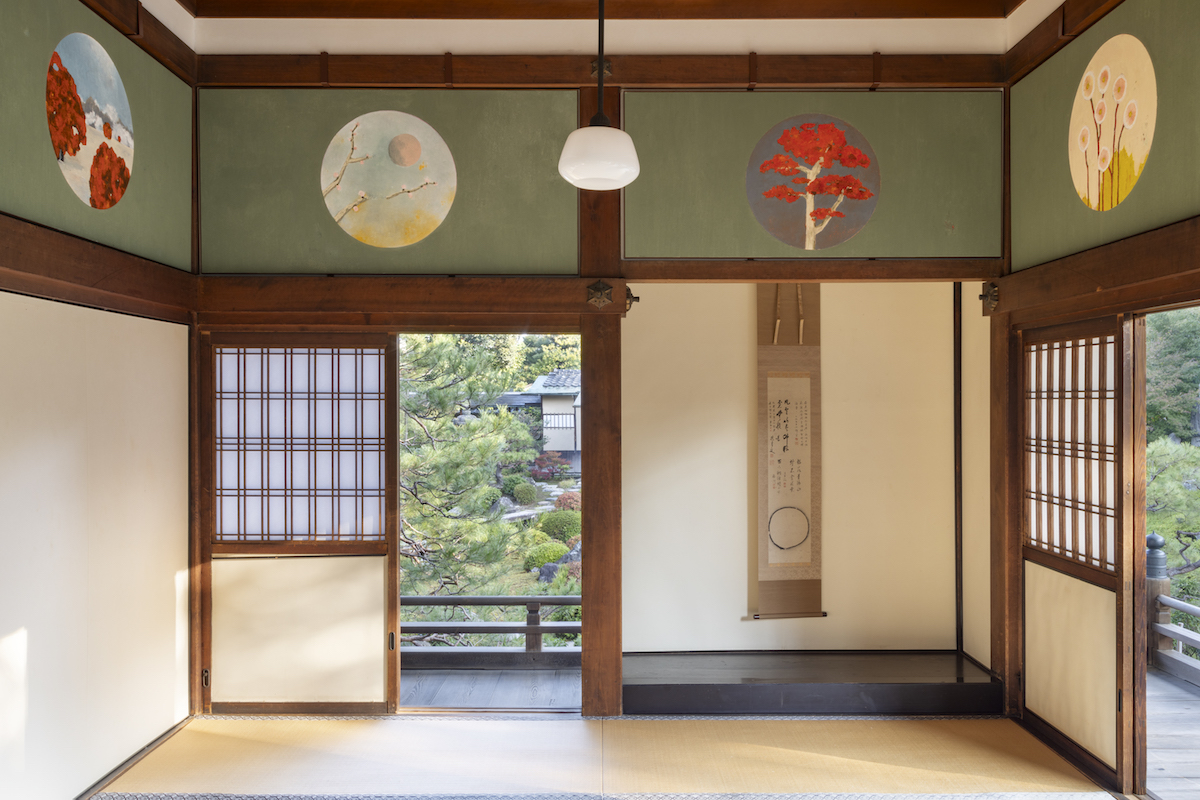
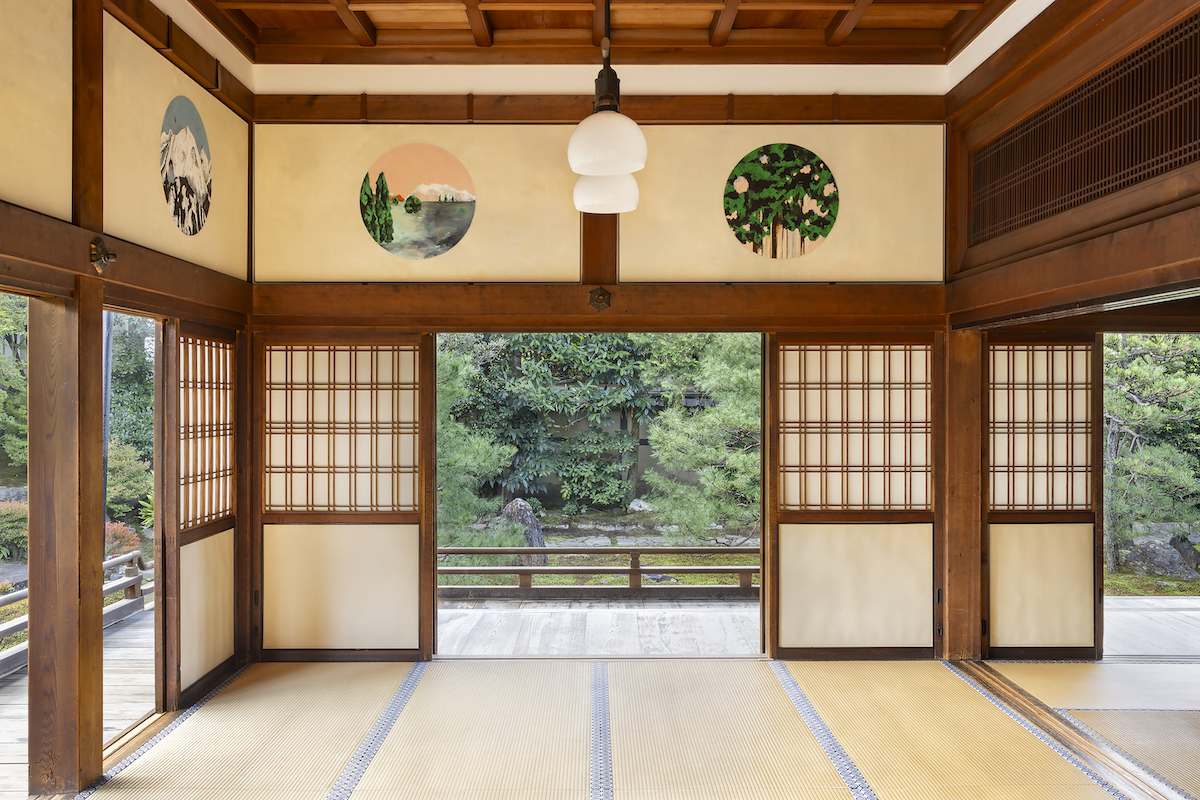
Bird Time: The Exhibition
The exhibition, which ran from Oct 29 to Nov 11, 2023, showcased a series of 33 paintings, each carefully positioned above doors and windows. Ancart’s artworks became integral components of the temple’s aesthetic, creating a harmonious blend between traditional spirituality and contemporary artistic expression.
The exhibition marks Ancart’s first solo exhibition in Japan and exemplifies the evolving nature of art within sacred spaces. Ancart’s unique perspective on art, where strokes share an equal position of power, resonates with the Zen philosophy that underlies Ryosokuin.
Deputy Chief Priest Toryo Ito, born and raised at Ryosokuin, played a pivotal role in facilitating this unique collaboration. In a conversation with Ancart, Ito expressed his admiration for the artist’s ability to integrate his work into the sacred space seamlessly: “I would say that this exhibition was extremely successful. The work blended into the space so well that at first, I thought it was a design originally included in Ryosokuin Temple.”
The collaboration with Ancart signifies a departure from conventional exhibitions held at Ryosokuin, where the entire space is utilized. Instead, Ancart’s “Bird Time” strategically places each artwork, ensuring they become integral to the temple’s aesthetic fabric. Ito reflected on this departure, stating, “Harold-san and I counted how many sides there were and found that we could display our works on 33 sides. In Buddhism, the number 33 is considered a sacred number, meaning eternity, and it was the same number.”
Ancart’s rapid artistic process, completing 33 paintings in a year, speaks to the fluidity and spontaneity embedded in his creative approach. This prolific output was not about volume alone but a manifestation of his deep connection with the temple’s spiritual essence.
Ancart’s Ode to Morning Serenity
The exhibition title, “Bird Time,” holds profound symbolism, referencing the early hours of the morning when birds commence their melodious symphony. Ancart eloquently expressed the significance of this title, stating, “As we find ourselves, for a second maybe, in between dream and reality, vision comes to us as a whole, with no hierarchy, as if we were seeing for the very first time.”
Ancart’s fascination with nature transcends mere representation; it becomes a meditation on the timeless beauty inherent in the surroundings. His motifs, such as trees, fire, and icebergs, echo the eternal dance of the natural world. “I see the landscape as a collection of countless colors,” Ancart shares, emphasizing his unique perspective that goes beyond lines and outlines, capturing the essence of nature in its purest form.
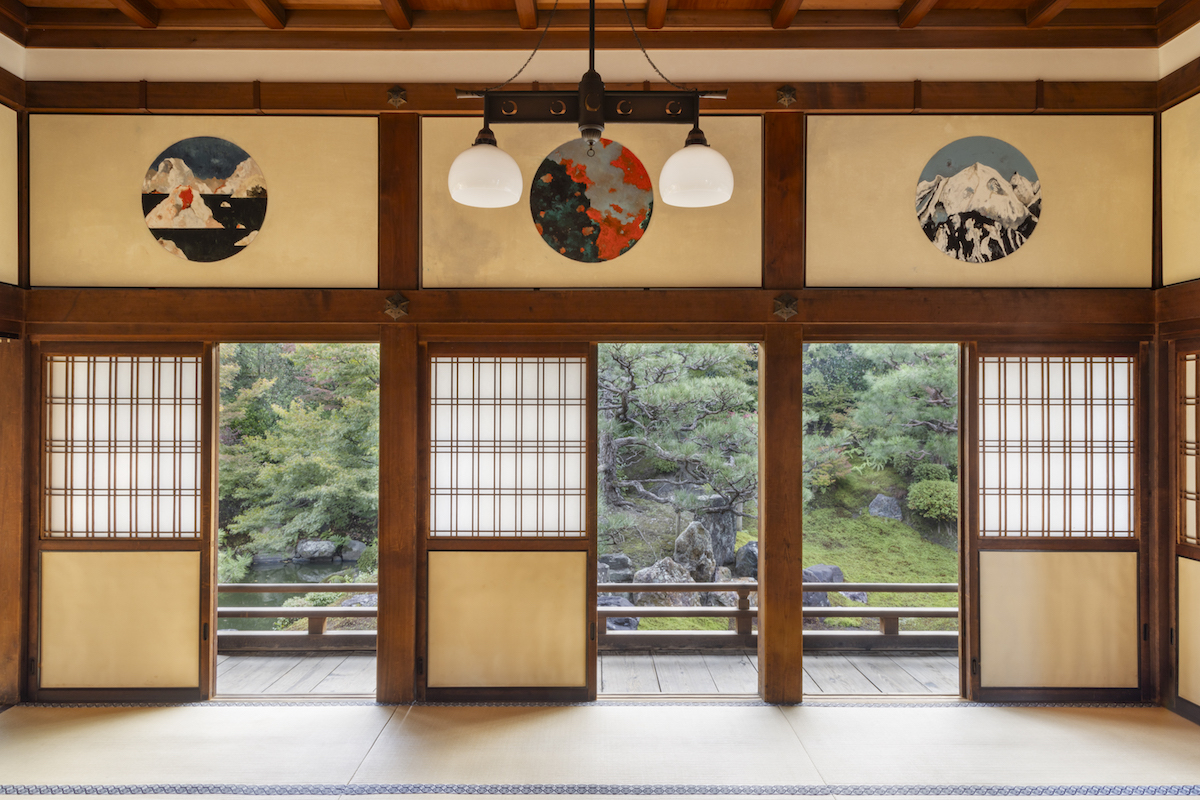
A Symbiotic Harmony: Integrating Art into Spiritual Spaces
As viewers engage with “Bird Time” at Ryosokuin, they find themselves immersed in an experience where the boundaries between the sacred and the contemporary blur. Ancart’s paintings, strategically positioned above doors and windows, beckon visitors to contemplate the interplay between art and spirituality.
The success of this collaboration is not just in the visual harmony between Ancart’s paintings and Ryosokuin’s architecture but in the profound understanding that art, when thoughtfully integrated, can enhance and complement the spiritual essence of a space.
Ancart and Ito delve into the synergy between contemporary art and ancient Zen philosophy in their conversations. “Collaborating with artists is an important experience that pushes those boundaries in ways you could never have imagined,” reflects Ito. Ancart, in turn, expresses his appreciation for the Zen idea of letting go. This dialogue showcases the profound impact of the collaboration, not just in physical spaces but in the realms of thought and perception.
An Invitation to All
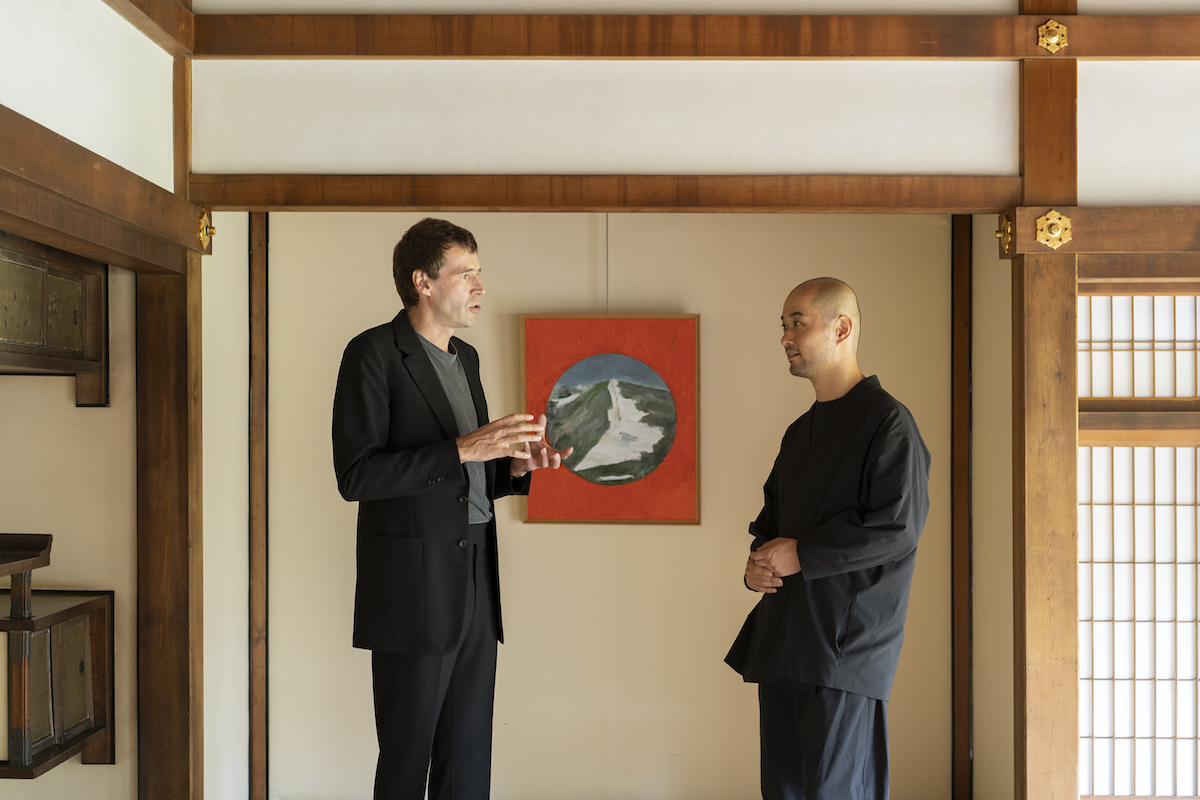
The “Bird Time” exhibition at Ryosokuin Temple is a testament to art’s transformative power when it converges with spirituality. Ancart’s ability to infuse his creations with the essence of the temple and Ito’s open-minded approach to integrating contemporary art into traditional spaces create a compelling narrative. This collaboration opens new possibilities for artists to engage with sacred environments, fostering a dialogue transcending art and spirituality’s conventional boundaries.
As the exhibition concludes, Ryosokuin Temple remains a living testament to the harmonious coexistence of ancient traditions and contemporary expressions. The temple’s doors remain open, inviting future artists to explore and contribute to this sacred space’s rich tapestry of art and spirituality. Ryosokuin’s commitment to fostering such collaborations ensures that the legacy of “Bird Time” becomes a stepping stone for future artists seeking to engage with the timeless beauty of Kyoto’s cultural and spiritual heritage.